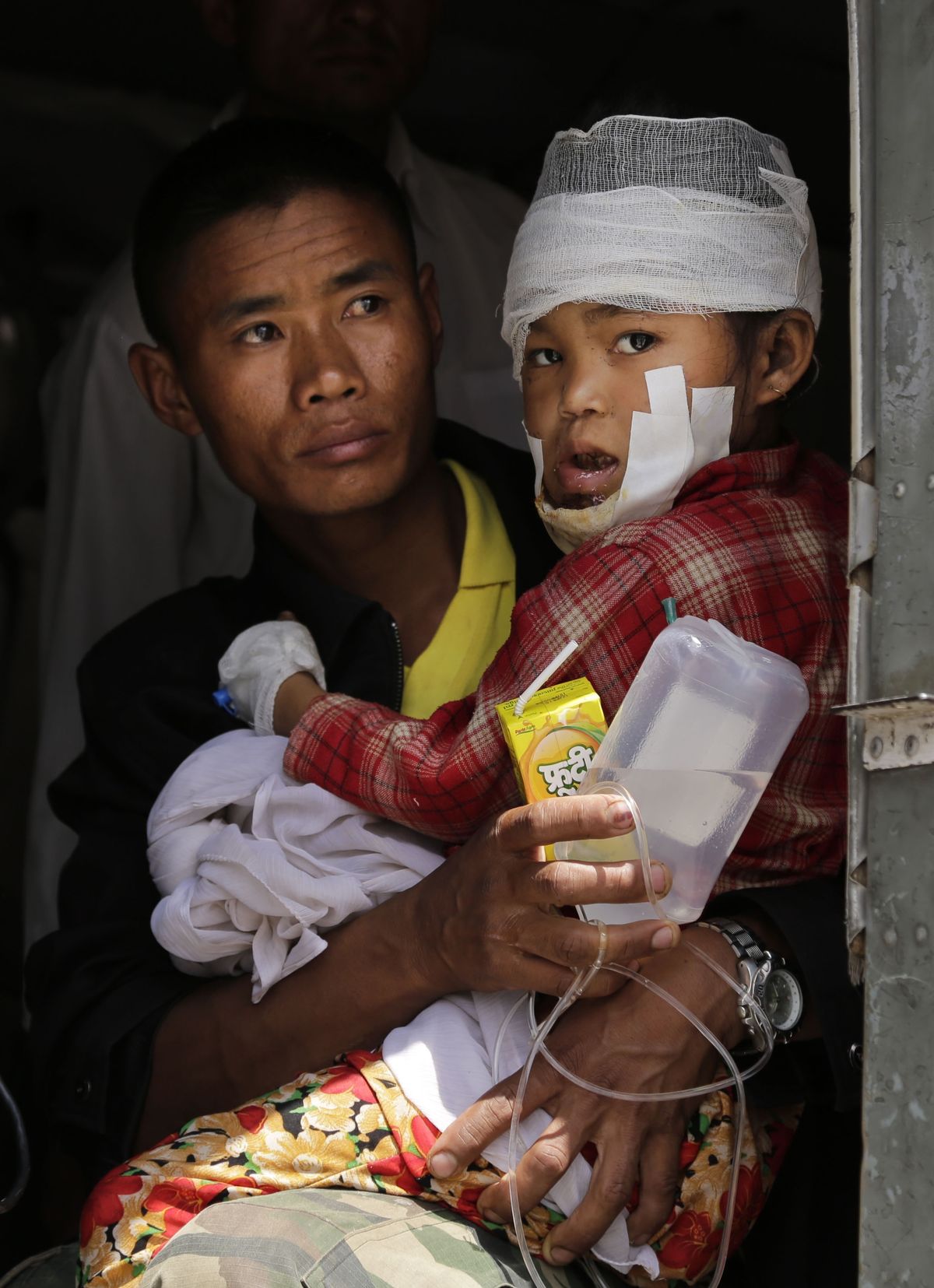Impoverished Nepalese ill-prepared for tragedy
Death toll passes 4,300, may top 8,000

KATHMANDU, Nepal – As the death toll from Nepal’s massive earthquake passed 4,300 on Monday, it was not just drinking water, hospital beds, gasoline, electricity and sanitary facilities that were in short supply.
Hope in the government’s ability to help was also increasingly scarce.
Unstable and resource-starved even in better times, Nepal’s government acknowledged Monday that it was ill-prepared to deal with a widening tragedy whose death toll could surpass 8,000, according to officials’ estimates. The tally of injured stood at more than 8,000.
Three full days after the temblor, rescue and relief workers had yet to reach numerous remote mountain villages even as reports trickled out that vast numbers of homes had been reduced to heaps of rubble. Although nearly all of Nepal’s 100,000-member army was deployed for rescue and relief missions, residents in hamlets ringing Kathmandu said they saw few security forces.
Soldiers and police in many cases were just as shocked and hungry as those they were trying to help, subsisting on the same diet of noodles and water.
The government’s struggling response has laid bare the costs of a protracted political crisis that has left this impoverished South Asian nation without a formal constitution or elected local leaders. There have been no elections at the local level since a state of emergency was declared in 1998, leaving far-flung districts, towns and villages – including some of the hardest hit areas – in the hands of appointed committees that are not equipped to manage emergency operations.
Seismologists had long warned that Nepal – which sits on a major fault and suffered a similar massive quake eight decades ago – was at risk of a devastating tremor. Conflict and political infighting have distracted from efforts to modernize infrastructure or build the economy, which depends heavily on foreign aid and remittances from Nepalese working overseas.
“One cannot predict when such disasters happen, but we’ve been told over the last 20 years that it would happen,” said Prashant Jha, a Nepal-born journalist with the Hindustan Times newspaper, who has written a book on the country. “When it did occur, was the Nepali state in a position to cope with it? I don’t want to be too harsh at this moment, but the answer is clearly no.”
Six miles from Kathmandu, the capital, in the medieval temple town of Bhaktapur, where 202 people were reported killed in Saturday’s magnitude 7.8 quake, residents said most homes in the city had collapsed, trapping some people underneath. In an account posted online, a pair of Nepalese reporters said that a soldier asked them to use their camera’s zoom lens to inspect debris about 50 yards away because the military lacked the equipment to do so.
“There was a strong presence of security forces on Saturday, but since yesterday there has been no state presence in Bhaktapur, leaving survivors to manage food and shelter on their own,” said Rabindra Puri, who works to restore old homes and temples.
In the coming weeks, Nepal’s largely ad hoc local government system will be further challenged to manage the flood of international aid and direct it to the neediest areas.
Sara Shneiderman, an anthropology professor at the University of British Columbia who works in Nepal, said possible corruption and weak links between Kathmandu and rural areas – where approximately 90 percent of Nepal’s 28 million people live – could make it difficult for officials to set priorities.